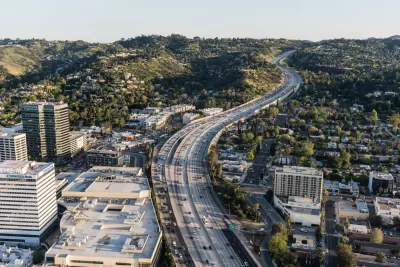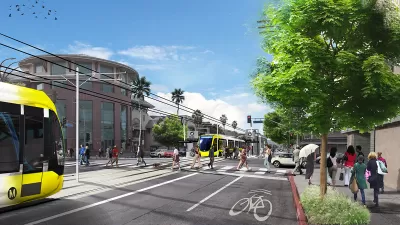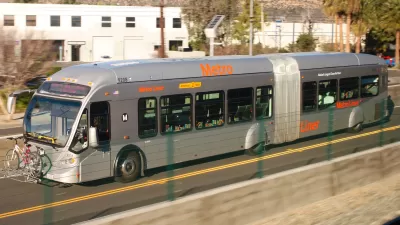A rail transit project has serious momentum in Los Angeles, offering a potentially game changing alternative to the notoriously jammed commute on Interstate 405 over the Sepulveda Pass.

The Los Angeles County Metropolitan Transportation Authority (Metro) yesterday announced refined plans to built a rail transit connection between the Westside and the San Fernando Valley in Los Angeles. The notoriously jammed Interstate 405 Freeway now serves as the route's primary connection.
Writing for Metro, Steve Hymon presents the four "refined concepts" released yesterday, describing the planned route as "fast, high capacity rail."
"The refined concepts are part of an ongoing Feasibility Study for the Sepulveda Transit Corridor project, which has nearly $10 billion in funding from Metro’s Measure R and M sales tax measures approved by L.A. County voters in 2008 and 2016, respectively," explains Hymon.
Hymon points out additional details included in the current presentation of the refined concepts. A few to note include a proposal to remove light rail from consideration, due to its lower carrying capacity, in favor of heavy rail.
Other large questions still need to be resolved about how to connect the Sepulveda Transit Corridor to the planned East San Fernando Valley Transit Corridor, a light rail route expected to begin construction in 2022.
Local media was quick to pick up the news. Steven Sharp, writing for Urbanize LA, provides details on the four alternatives under consideration.
Laura Nelson also reports on the new concepts for the project, noting the engineering challenges posed by the steep hills of the Sepulveda Pass. Still, notes Nelson, the project offers a "key opportunity to shift more drivers onto transit" in a region where the vast majority of commuters drive alone to work.
FULL STORY: Here are the four new refined concepts for Sepulveda Transit Corridor

Maui's Vacation Rental Debate Turns Ugly
Verbal attacks, misinformation campaigns and fistfights plague a high-stakes debate to convert thousands of vacation rentals into long-term housing.

Planetizen Federal Action Tracker
A weekly monitor of how Trump’s orders and actions are impacting planners and planning in America.

Chicago’s Ghost Rails
Just beneath the surface of the modern city lie the remnants of its expansive early 20th-century streetcar system.

Bend, Oregon Zoning Reforms Prioritize Small-Scale Housing
The city altered its zoning code to allow multi-family housing and eliminated parking mandates citywide.

Amtrak Cutting Jobs, Funding to High-Speed Rail
The agency plans to cut 10 percent of its workforce and has confirmed it will not fund new high-speed rail projects.

LA Denies Basic Services to Unhoused Residents
The city has repeatedly failed to respond to requests for trash pickup at encampment sites, and eliminated a program that provided mobile showers and toilets.
Urban Design for Planners 1: Software Tools
This six-course series explores essential urban design concepts using open source software and equips planners with the tools they need to participate fully in the urban design process.
Planning for Universal Design
Learn the tools for implementing Universal Design in planning regulations.
planning NEXT
Appalachian Highlands Housing Partners
Mpact (founded as Rail~Volution)
City of Camden Redevelopment Agency
City of Astoria
City of Portland
City of Laramie




























